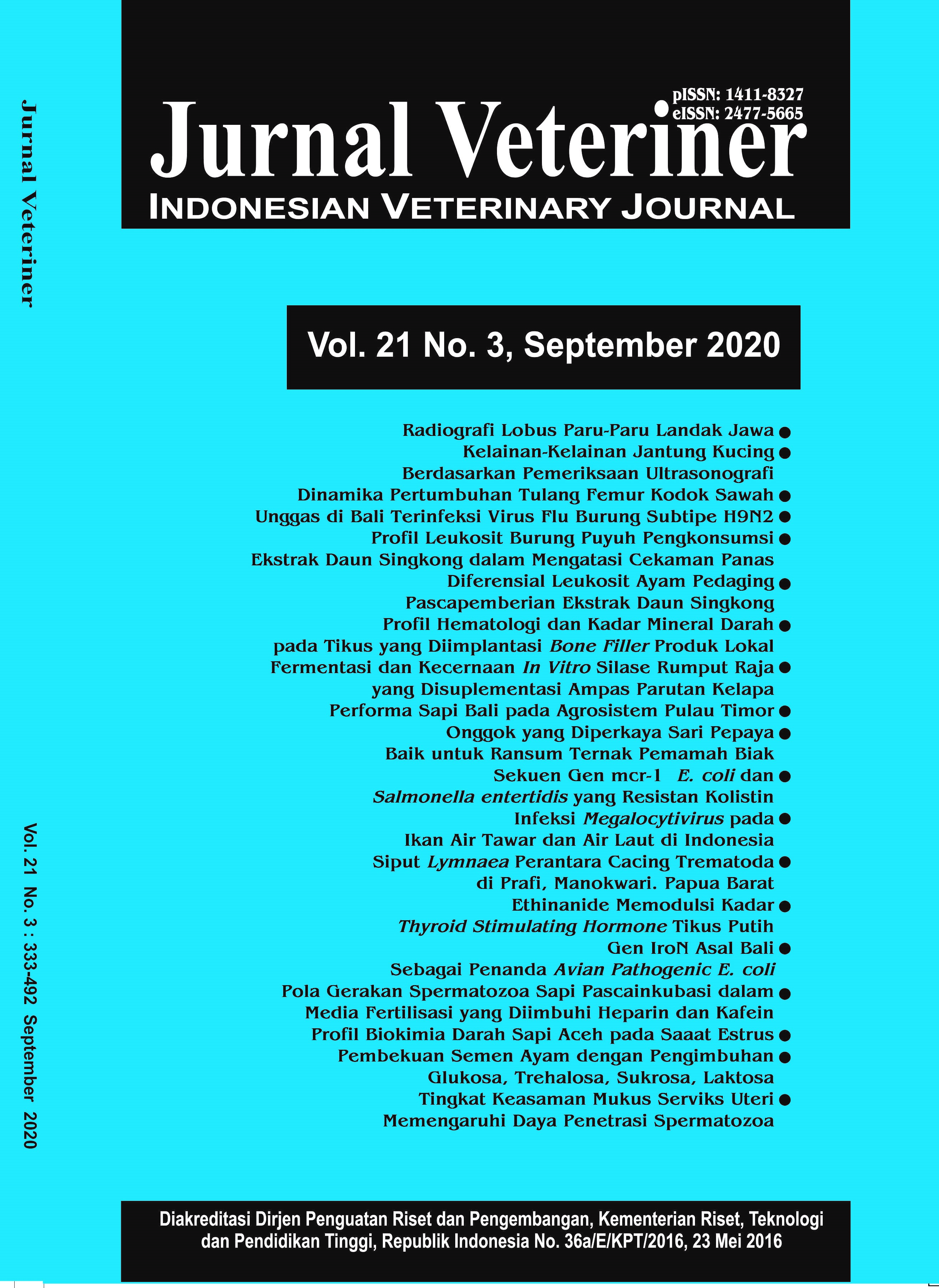LYMNAEA SPP. SNAIL AS INTERMEDIATE HOST OF TREMATODE IN PRAFI DISTRICT, MANOKWARI, PAPUA BARAT
Abstract
Paramphistomum spp. and Fasciola spp. are the most common trematodes that infect cattle throughout the world including in Manokwari, West Papua. During their life cycle, freshwater snails act as the intermediate host for the larval. This study aims to provide information about the presence of cercariae –the larval form of trematode- within the body of Lymnaea spp. snail. The study was conducted in August-September 2019 in Prafi District, Manokwari, West Papua. Lymnaea spp. were collected from 15 permanent and seasonal drainage around a water dam, rice field irrigation, and palm oil plantations. Snails are collected by hand using a quadrant or using the "man per minute" method. Cercaria within the snail's body is examined using the "crushing method" under a light microscope. Snails that have cercaria trematodes are categorized as infected snails. The percentage of snails infected with trematodes in August and September were 15.92% (53 out of 333 snails) and 38.05% (78 out of 205 snails), respectively. Cercariae that were identified were longifurcate-pharyngeate cercariae (Strigea cercaria), Cercariaeum cercaria, and Virgulate cercaria. The adult phase of these cercaria are generally exist in the intestine of mammals, amphibians, birds and fish. Further research is needed to provide more accurate information about the epidemiology and morphology of trematodes in freshwater snails.



















